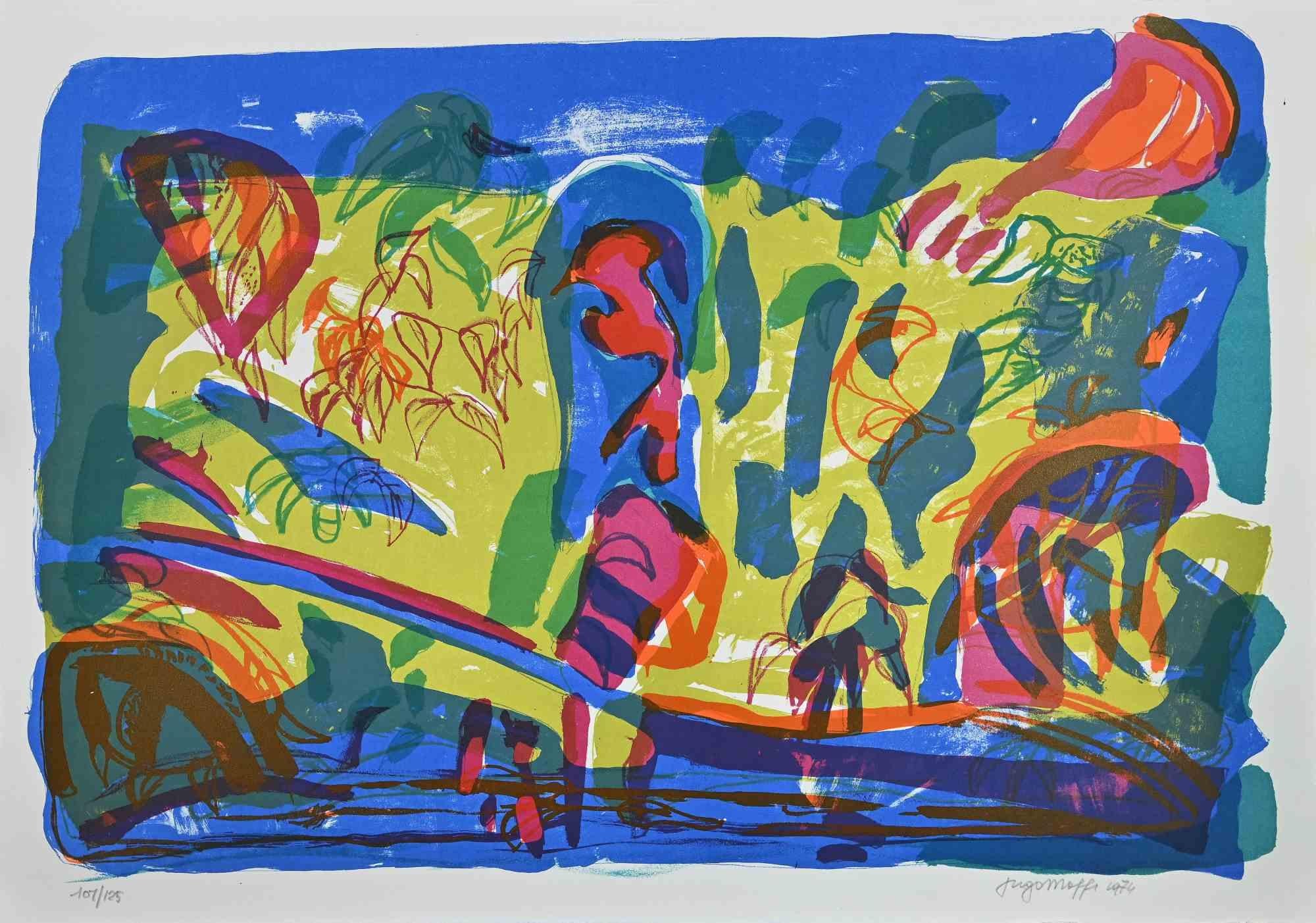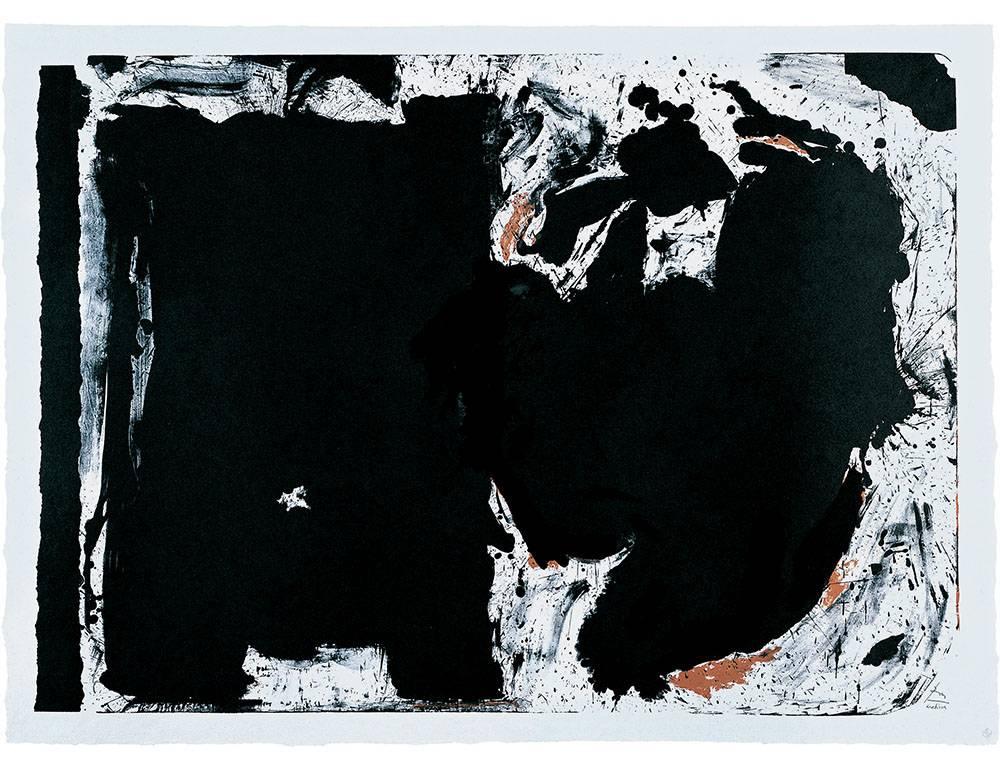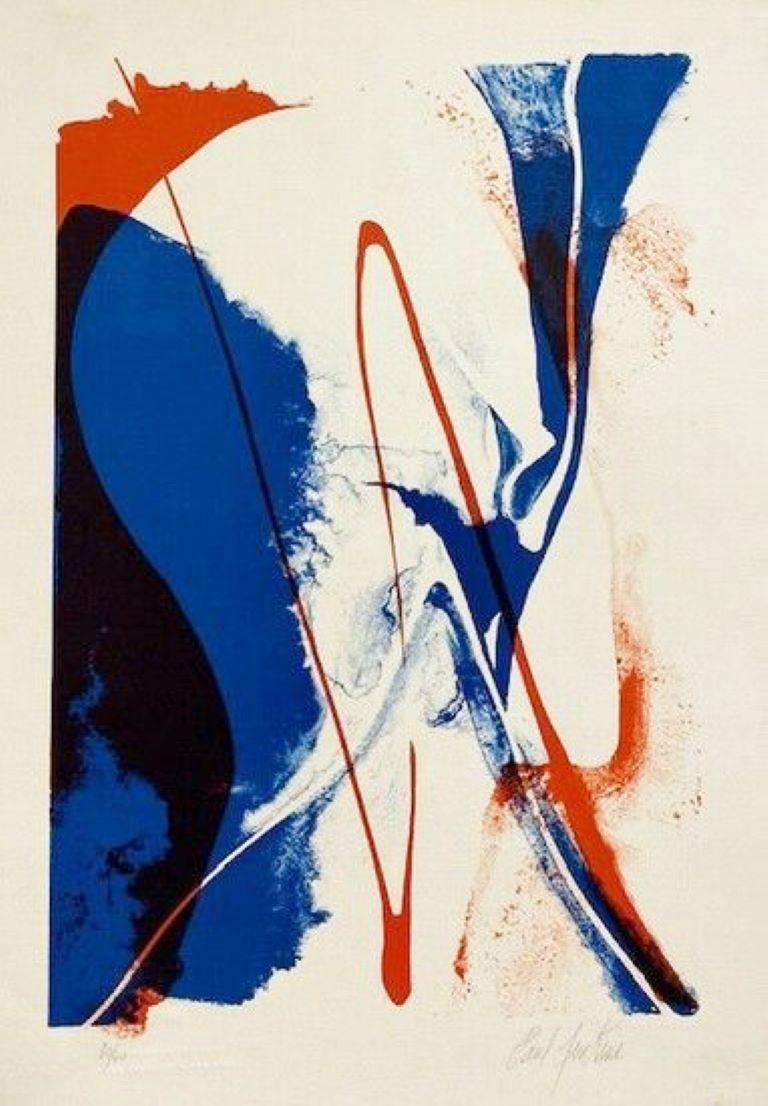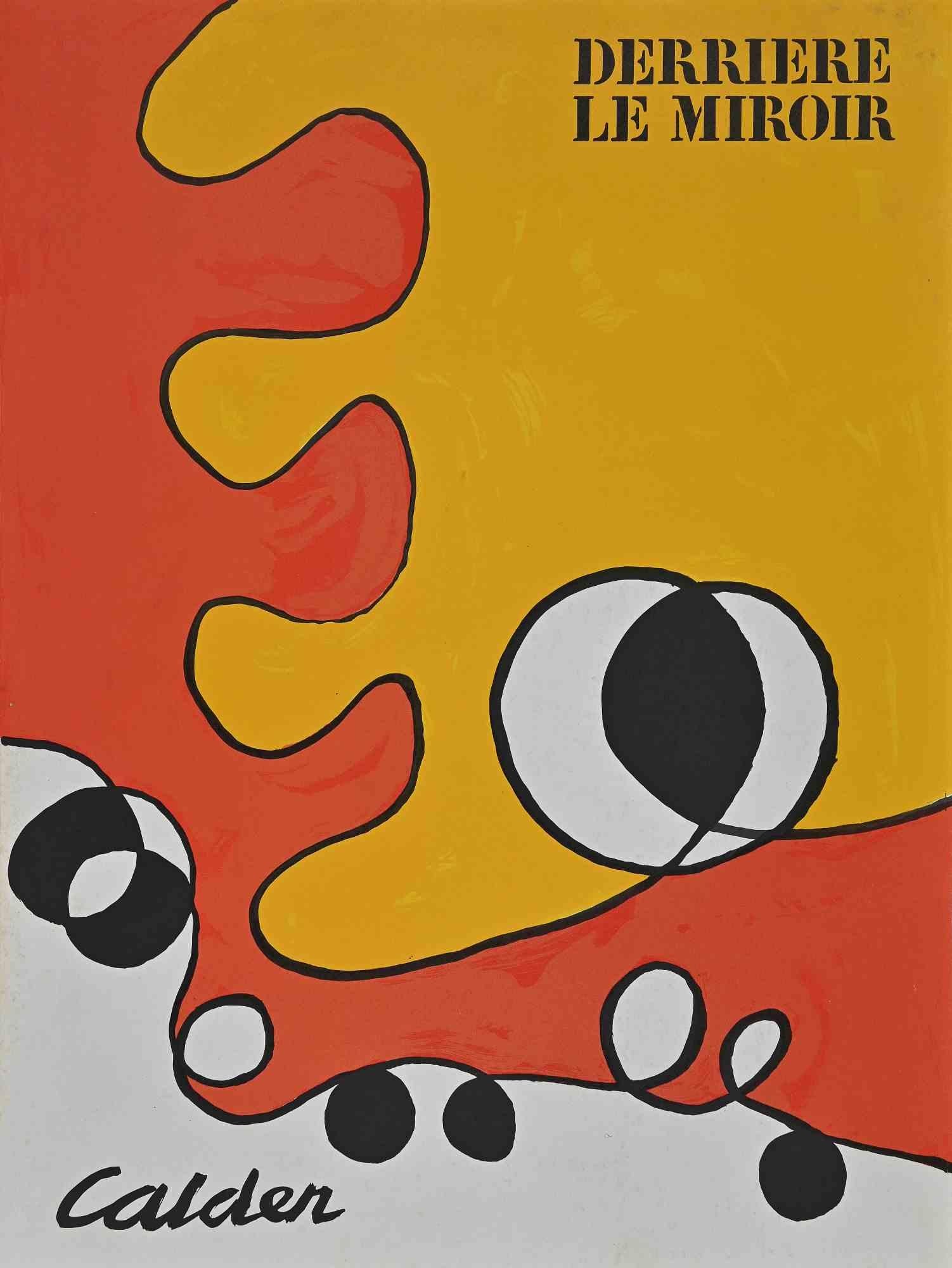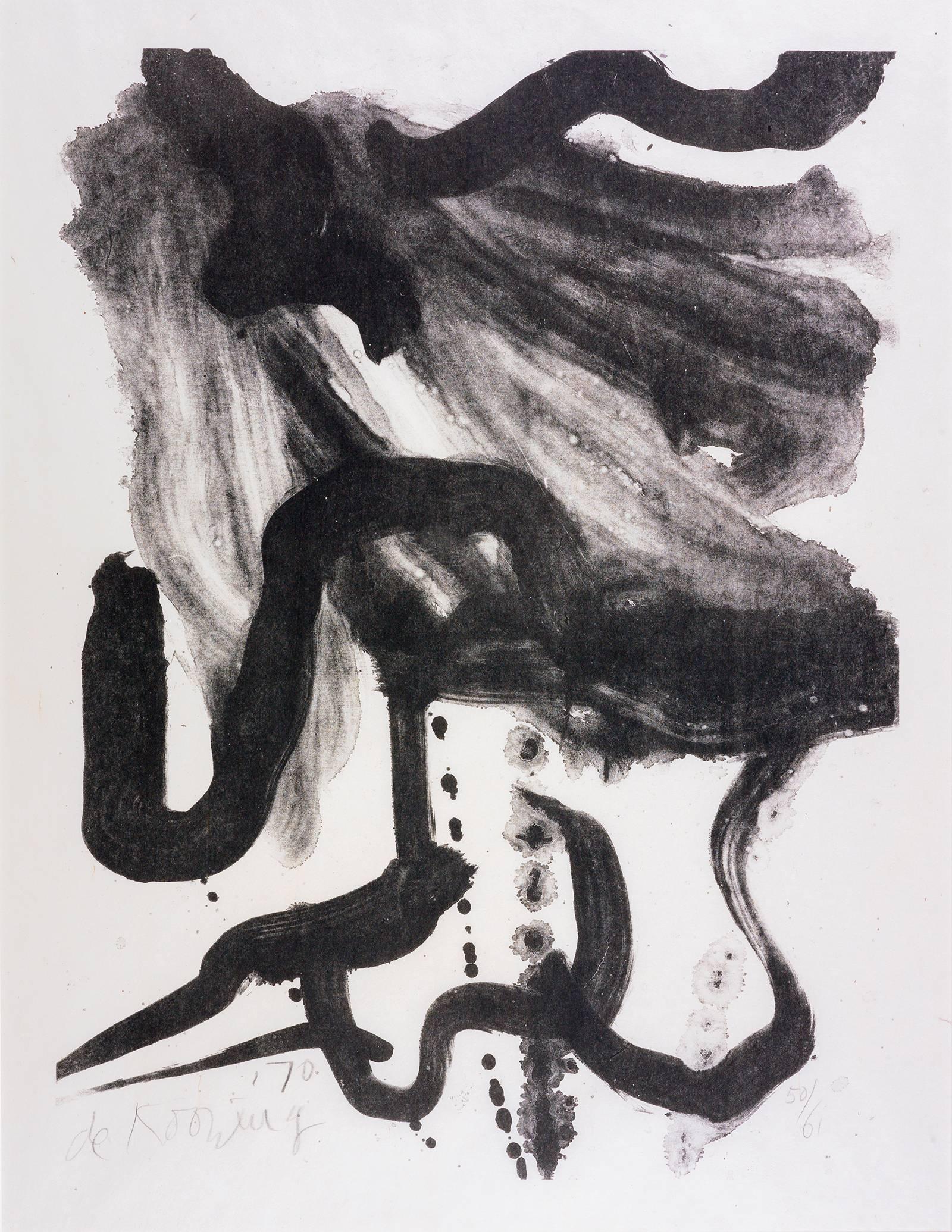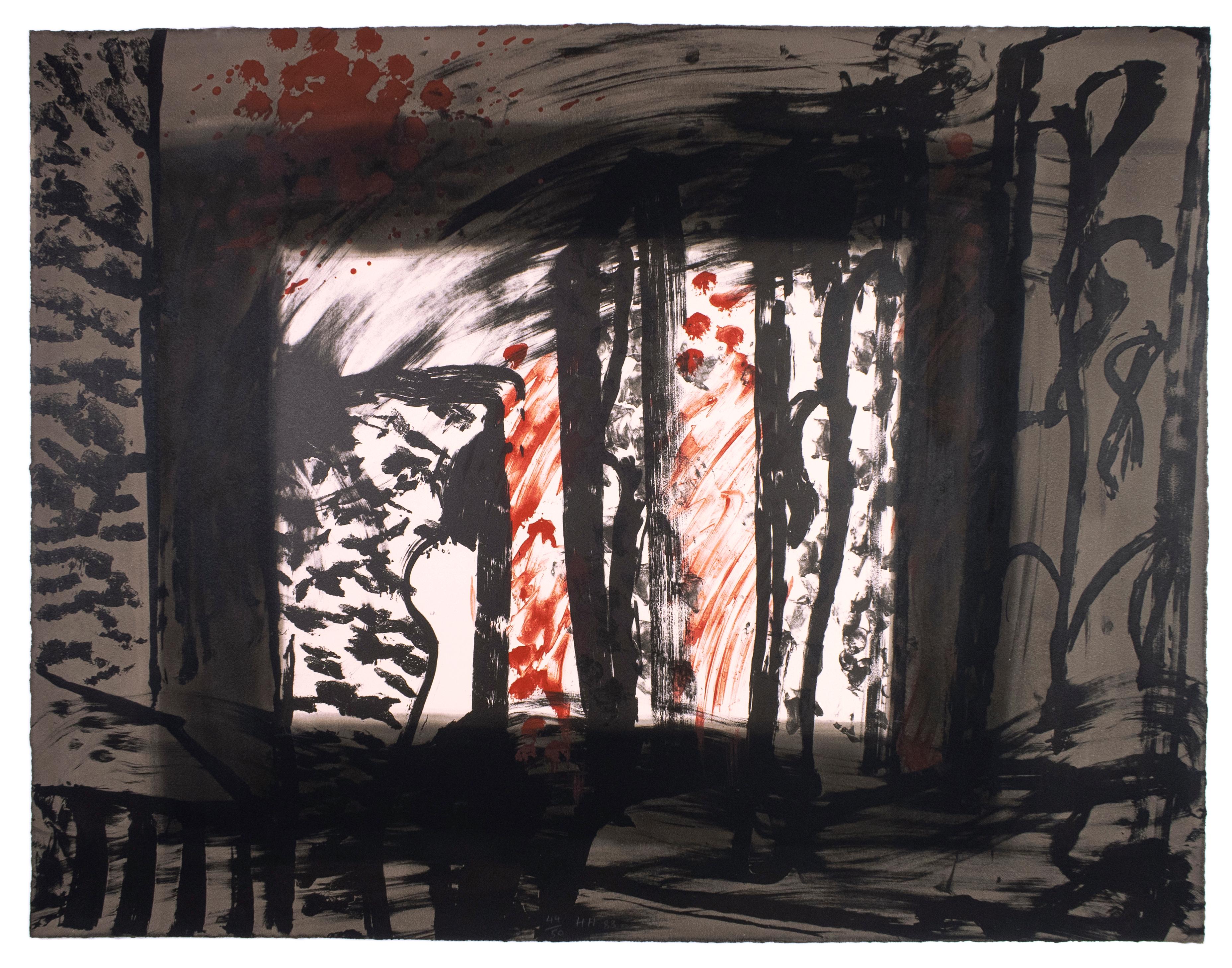Items Similar to Abstract (Edition 48/100)
Want more images or videos?
Request additional images or videos from the seller
1 of 11
Bram Van VeldeAbstract (Edition 48/100)Unknown
Unknown
About the Item
Abstract (Edition 48/100)
By Bram van Velde (1895-1981)
Without Frame: 37" x 24"
With Frame: 37.75" x 24.75"
Signed and Numbered Bottom Left
Bram (Abraham Gerardus) van Velde was a Dutch painter known for an intensely colored and geometric semi-representational painting style related to Tachisme*, and Lyrical Abstraction*. He is often seen as member of the School of Paris* but his work resides somewhere between expressionism* and surrealism*, and evolved in the 1960s into an expressive abstract art. His paintings from the 1950s are similar to the contemporary work of Matisse, Picasso and the abstract expressionist Adolph Gottlieb. He was championed by a number of French-speaking writers, including Samuel Beckett and the poet André du Bouchet.
Bram van Velde was born into an intensely poor family, and this would mark him profoundly for life. His mother, Catharina von der Voorst (1867-1949) was the illegitimate daughter of a Count. His father, Willem van Velde (1868-1914), owned a small company in water transportation on the Rhine. Bram was the second of four children (his sister Cornelia was born in 1892, Geer and Jacoba were born in 1898 and 1903). After going bankrupt, the father abandoned the family; the mother and children moved repeatedly over the next years, from Leyden to Lisse, and finally to The Hague.
In 1907, the young Bram entered into service as an apprentice in the painting and interior decorating company of Schaijk & Kramers in The Hague. He was encouraged in his art by the co-owner Eduard H. Kramers and his son Wijnand, who were appreciators and collectors of art, and these two would become Bram van Velde's artistic patrons until around 1934. Because of his status as bread-winner for his family, Bram van Velde was exempted from service in the First World War, and he was able to continue his work as a painter and decorator, and to enroll in the Mauritshuis of The Hague, where he was able to copy masterworks in the collection.
In 1922, the Kramers encouraged van Velde to travel and gave him a monthly stipend. He went first to Munich in May, then to north of Bremen (in Worpswede) in June, where, since the 1890s, there existed a colony of expressionist artists. This brief exposure to contemporary art (3 months) revolutionized van Velde's work. He left Worpswede shortly after, and moved to Paris (in the "Belleville" quartier, XIXe arrondissement). His career progressed slowly, and in February 1927 he exposed his works in Bremen. This was followed by the Jury-Freie Kunstschau of Berlin in April. Finally, he (with his brother Geer) was admitted into the Salon des Indépendants in Paris, where he would show his works several times (1928 to 1932, in 1940 and 1941). In this period he went to Chartres in the company of Otto Freundlich, and also discovered the works of Henri Matisse (probably at the home of Paul Guillaume). Matisse would have a great impact on van Velde's work (as too, in coming years, van Velde's discovery of Pablo Picasso).
On October 6, 1928, van Velde married the German painter Lilly (Sophie Caroline) Klöker (1896-1936), that he had been seeing since perhaps his stay at Worpswede. With the Great Depression, their material conditions deteriorated and they moved to Spain, and in September 1932 they were living in Majorca. It is here that van Velde used the early painting of Matisse as his inspiration and he made a series of still-lives in which his later abstraction started to show itself. When the Spanish Civil War started in 1936, Lilly van Velde died in a hosptial and Bram van Velde fled back to Marseille with several of his canvases made on Majorca.
He came back to Paris and moved in with his brother Geer. He met Marthe Arnaud, a former Lutheran missionary in the Zambezi, and they became a couple. On the studio of his brother Geer van Velde—also becoming an abstract painter—Bram van Velde met the writer Samuel Beckett, and the two would develop a friendship. Stopped on the street by the police in 1938 because he was speaking German with Marthe, van Velde was briefly imprisoned (his papers were not in order), and brief incarcerations would occur several times in the coming years.
In 1939, van Velde came upon his own painting style while working in a large-format with gouache. He stopped painting in 1941, but began again in the fall of 1945. His first solo exhibition opened March 21, 1946 in Paris in the "Galerie Mai" with 25 canvases, nearly all of his existing works, but the show was a failure. Beckett wrote his first essay on his work in les Cahiers d'art de Zervos. In 1947, van Velde signed a contract with the Galerie Maeght in Paris, and in 1948 he showed his work in the Kootz gallery in New York, but this was also a commercial failure, despite a good review by Willem de Kooning. After one more commercial disaster at Maeght, van Velde stopped painting for a year. In 1952, Maeght canceled their contract with him, while retaining his works.
In 1958, Franz Meyer organized the first museum exposition of Bram van Velde, a retrospective at the Kunsthalle of Bern. The couple Bram-Marthe left Paris the same year, but Marthe died the following year (August 11), having been hit by a car during a brief trip to Paris. On Christmas 1959, Bram van Velde met Madeleine in Geneva, and the two became a couple.
Starting in 1961, van Velde began to achieve a certain critical success. Jean-Michel Meurice made a documentary film about the artist. Also younger expressive painters as Pierre Alechinsky and the Danish Cobra*-painter Asger Jorn admired Van Velde's art very strongly; they met him frequently and let their own art be influenced by his expressive art. Van Velde shuttled between Paris and Geneva, and in 1967 he moved to the latter. When the relation with Madeleine broke he returned to the Bourgogne where he lived and worked in a very sober little house. In 1957 Van Velde makes his first lithograph*, and with the help of Jaques Putman from then he starts to make long series of lithographs in the next years.
In 1962, 1964 and 1968 Van Velde had exhibitions in the United States organized by Knoedler Gallery. After 1970, Van Velde traveled a lot to visit his own exhibitions in Poland, Iceland, Italy and Norway, Brussels, Copenhagen, Amsterdam and Rome. In 1964, he was named "chevalier" of the Ordre des Arts et des Lettres, and the Netherlands awarded him the Order of Orange-Nassau in 1969. In 1980 he was made chevalier of the "Order of the Falcon" in Iceland. For his 80th birthday, a collective homage was published by the presses at Fata Morgana (Montpellier).
Bram van Velde died December 28, 1981 in Grimaud (near Arles), and is buried there. His mentor and friend Jacques Putman, who supported him and his career after Bram's departure from Maeght, is buried beside him (Putman died February 27, 1994 in Paris).
- Creator:Bram Van Velde (1895 - 1981, Dutch)
- Creation Year:Unknown
- Dimensions:Height: 37 in (93.98 cm)Width: 24 in (60.96 cm)
- Medium:
- Movement & Style:
- Period:
- Condition:
- Gallery Location:Missouri, MO
- Reference Number:1stDibs: LU747310308452
Bram Van Velde
Bram van Velde is a Dutch painter born October 19, 1895 in Zoeterwoude, near Leiden Netherlands). He entered in 1907 as an apprentice in a painting and interior decoration company in The Hague, he is encouraged in his art by Eduard H. Kramers and his son Wijnand, collectors and amateurs sensitive to his talent. In 1922, Kramers encouraged van Velde to travel, perhaps to improve himself and pay him a small income. The latter goes to Munich, then settles north of Bremen, Worpswede, where since the 1890s there is a colony of expressionist artists. He leaves Worpswede to settle in Paris. His career took off, and in February 1927 he went to Bremen to exhibit his works. He followed in April on the Jury-Freie Kunstschau of Berlin, and is admitted, along with his brother Geer, to the Salon des Independants in Paris. It was in 1939 that the artist created his own plastic language, with the first of three great gouaches that would establish the autonomy of his art. He stopped painting in 1941, he "no longer has the strength to continue his work," according to what he wrote around 1945, only to resume in the autumn of 1945. In 1958 Franz Meyer organized the first museum exhibition at the Kunsthalle Bern. Since 1961, the pace of exhibitions is accelerating, its standard of living suffers. Van Velde oscillates between Paris and Geneva, where he began painting before settling there in 1967. France named him Knight of the Order of Arts and Letters in 1964, Holland awarded him the Order of Orange-Nassau in 1969. In 1973, he painted in La Chapelle-sur-Carouge some great gouaches who are like a last "wild" display of color in his work. He died on December 28, 1981 in Grimaud and is buried in the cemetery of Arles.
About the Seller
5.0
Vetted Seller
These experienced sellers undergo a comprehensive evaluation by our team of in-house experts.
Established in 1970
1stDibs seller since 2017
141 sales on 1stDibs
Typical response time: 23 hours
- ShippingRetrieving quote...Ships From: Missouri, MO
- Return PolicyA return for this item may be initiated within 2 days of delivery.
More From This SellerView All
- Observador de PajarosBy Rufino TamayoLocated in Missouri, MO"Observador de Pajaros" 1950 By. Rufino Tamayo (Mexican, 1899-1991) Edition 83/210 Lower Right Signed Lower Left Unframed: 15.5" x 22.5" Framed: 21.75" x 28.25" Rufino Tamayo (August 26, 1899- June 24, 1991) A native of Oaxaca in Southern Mexico, Rufino Tamayo's father was a shoemaker, and his mother a seamstress. Some accounts state that he was descended from Zapotec Indians, but he was actually 'mestizo' - of mixed indigenous/European ancestry. (Santa Barbara Museum of Art). He began painting at age 11. Orphaned at the age of 12, Tamayo moved to Mexico City, where he was raised by his maternal aunt who owned a wholesale fruit business. In 1917, he entered the San Carlos Academy of Fine Arts, but left soon after to pursue independent study. Four years later, Tamayo was appointed the head designer of the department of ethnographic drawings at the National Museum of Archaeology in Mexico City. There he was surrounded by pre-Colombian objects, an aesthetic inspiration that would play a pivotal role in his life. In his own work, Tamayo integrated the forms and tones of pre-Columbian ceramics into his early still lives and portraits of Mexican men and women. In the early 1920s he also taught art classes in Mexico City's public schools. Despite his involvement in Mexican history, he did not subscribe to the idea of art as nationalistic propaganda. Modern Mexican art at that time was dominated by 'The Three Great Ones' : Diego Rivera, Jose Clemente Orozco, and David Alfaro Siqueros, but Tamayo began to be noted as someone 'new' and different' for his blending of the aesthetics of post Revolutionary Mexico with the vanguard artists of Europe and the United States. After the Mexican Revolution, he focused on creating his own identity in his work, expressing what he thought was the traditional Mexico, and refusing to follow the political trends of his contemporary artists. This caused some to see him as a 'traitor' to the political cause, and he felt it difficult to freely express himself in his art. As a result, he decided to leave Mexico in 1926 and move to New York, along with his friend, the composer Carlos Chavez. The first exhibition of Tamayo's work in the United States was held at the Weyhe Gallery, New York, in that same year. The show was successful, and Tamayo was praised for his 'authentic' status as a Mexican of 'indigenous heritage', and for his internationally appealing Modernist aesthetic. (Santa Barbara Museum of Art). Throughout the late thirties and early forties New York's Valentine Gallery gave him shows. For nine years, beginning in 1938, he taught at the Dalton School in New York. In 1929, some health problems led him to return to Mexico for treatment. While there he took a series of teaching jobs. During this period he became romantically involved with the artist Maria...Category
20th Century Abstract Abstract Prints
MaterialsLithograph
- FramedBy Sam FrancisLocated in Missouri, MOFramed Sam Francis (American, 1923-1994) Edition 58/100 in pencil Lower Left Signed in pencil Lower Right 17 x 22 inches 25.5 x 30.5 inches An Abstract Expressionist* painter known ...Category
1960s Abstract Abstract Prints
MaterialsColor, Lithograph
- Red and Green BubblesBy Victor VasarelyLocated in Missouri, MOVictor Vasarely "Red and Green Bubbles" c. 1970 Color Serigraph Signed and Numbered Ed. 125 Framed Size: 34 x 29.5 inches Image: approx 18 x 18 inchesCategory
1970s Abstract Geometric Abstract Prints
MaterialsLithograph
- St. Louis Symphony Orchestra (Poster) -- signed limited editionBy Robert MotherwellLocated in Missouri, MOOriginal color lithograph designed by Robert Motherwell for the 94th Season, Powell Symphony Hall, St. Louis Symphony Orchestra From the limited edition of 120 + A.P.s on Arches Cove...Category
1970s Abstract Expressionist Abstract Prints
MaterialsLithograph
- Sphere and CubeBy Victor VasarelyLocated in Missouri, MOVictor Vasarely "Sphere and Cube" c. 1970 Serigraph Signed and Numbered Ed. 250 Framed Size: 42 x 31 inches Image Size: 28 x 21 inchesCategory
1970s Abstract Geometric Abstract Prints
MaterialsLithograph
- Abstract in Purple and GreenBy Victor VasarelyLocated in Missouri, MOVictor Vasarely "Abstract" c. 1970 Serigraph Ed. 275 Signed and Numbered Image Size: 23.5 x 23.5 Framed: approx 34 x 34.5 inchesCategory
1970s Abstract Geometric Abstract Prints
MaterialsLithograph
You May Also Like
- Lament for LorcaBy Robert MotherwellLocated in London, GBLithograph on white Tyler Graphics Ltd. (TGL) handmade paper 44x61 in (111.8x154.9cm) Edition of 52Category
1980s Abstract Expressionist Abstract Prints
MaterialsColor, Lithograph
- Seeing Voice Welsh HeartBy Paul JenkinsLocated in New York, NYA very good impression of this color lithograph on Rives BFK. Signed and numbered 30/40 in pencil. Printed by Mourlot, Paris. Published by Galerie Karl Flinker, Paris. From the same-...Category
1960s Abstract Expressionist Abstract Prints
MaterialsColor, Lithograph
- Derriere le Miroir Cover - Vintage Lithograph by Alexander Calder - 1968By Alexander CalderLocated in Roma, ITDerriere le Miroir Cover is an original artwork realized by Alexander Calder in 1968. Original mixed colored lithograph. The artwork was th...Category
1960s Abstract Abstract Prints
MaterialsLithograph
- Woman with Corset and Long HairBy Willem de KooningLocated in New York, NYPrinter: Hollanders Workshop, New York Publisher: Knoedler, New York Edition size: 61, plus proofs Catalogue Raisonné: Graham 17 Signed, dated, and numbered inpencil, lower marginCategory
1970s Abstract Expressionist Abstract Prints
MaterialsLithograph
- Cespuglio all’Adda - Lithograph by Ugo Maffi - 1974By Ugo MaffiLocated in Roma, ITCespuglio all’Adda is an original artwork realized by Ugo Maffi in 1974. Mixed colored lithograph. Hand-signed by the artist on the lower right. Numbered on the lower left margin....Category
1970s Abstract Abstract Prints
MaterialsLithograph
- Sand Howard Hodgkin abstract sepia black and white earth tone painting printBy Howard HodgkinLocated in New York, NYAbstract, large scale earth toned red, black, taupe and grey scene with dynamic lines, shapes and hand painted brushstroke texture. This dramatic Howard Hodgkin work is ideal for dis...Category
1980s Abstract Abstract Prints
MaterialsWatercolor, Lithograph
Recently Viewed
View AllMore Ways To Browse
Large Lithograph Abstract
Abstract Lithograph 1950s
Vintage Daughter And Father
Abstract Expressionism Lithographs
Framed Gouache Print
Picasso Friendship
Jean Le Van
Pablo Picasso Couple
Picasso 1941
Vintage Christmas Prints
The Lilly Vintage
Mother And Children Italy
Vintage Christmas Art Prints
Discover Vintage Interiors
Vintage Travel Van
Vintage Travel Vans
August Munich
Vintage Transportation Art
